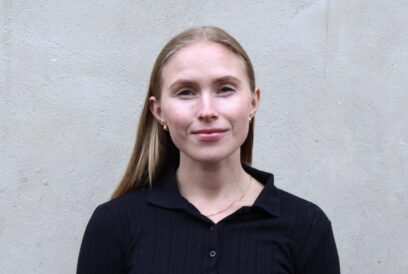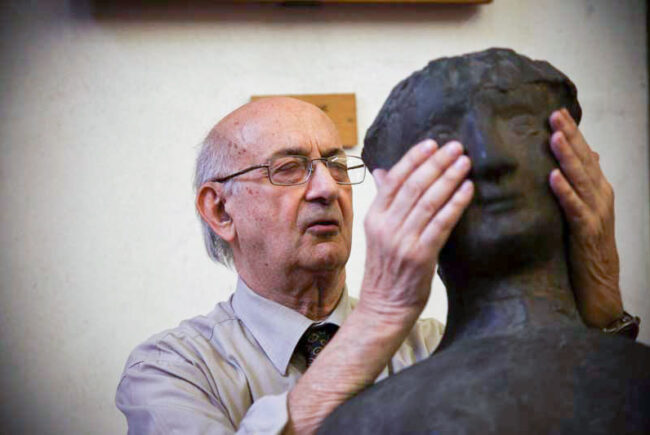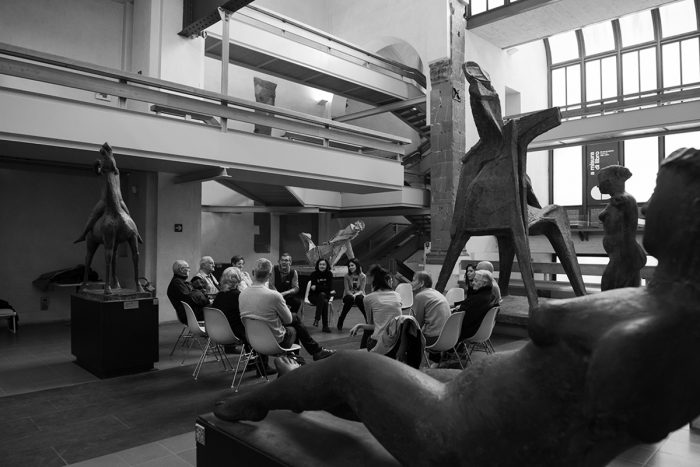

The goal of the MA&A project was to promote the social inclusion of people with dementia by facilitating access to art museums and galleries. / Photo: Luca Carli Ballola
The goal of the MA&A project was to promote the social inclusion of people with dementia by facilitating access to art museums and galleries. / Photo: Luca Carli Ballola
Introducing a European museum project with a specific aim: to make art accessible to people with Alzheimer’s disease.
People who are capable of contributing to our society – not patients that are suffering from an illness.
According to Cristina Bucci, this is the perception that is needed when we talk about people with dementia. The curator of educational programmes for the Marino Marini Museum in Florence, Italy and the project manager for the recently finished Museums Art and Alzheimer’s project explains:
“Everyone is entitled to participate in the cultural life of the community. This does not and must not change with a dementia diagnosis, because dementia does not reduce the human being”.
The museum takes on a new role within the community and becomes more alive, a place with meaning and shared values.
The goal of the MA&A project was to promote the social inclusion of people with dementia by facilitating access to art museums and galleries.
“People living with dementia can enrich our lives with their opinions and thoughts. Helping them to live well is a benefit for the whole society”, Cristina says.
She points out that doing this benefits museums, too.
“It forces us to renew our communication strategies, which is essential to audience development. Moreover, the museum takes on a new role within the community and becomes more alive, a place with meaning and shared values”.
Training material tailored for different audiences
Art museums and non-profit organisations from four European countries – Germany, Italy, Ireland and Lithuania – took part in the MA&A project.
All project partners had worked on making art accessible to people with Alzheimer’s before, but on their own. The aim now was to create online training material that could help others to do the same.
According to Cristina Bucci, it was quite easy to find a common starting point.
“We shared our own experiences about the subject and discussed what it was that we really wanted to create – something new that had not been available before. We understood that it is very important to tailor your program and proposal to the local situation”, Bucci says.
In the end two different toolkits were designed: one for family and professional carers of those with Alzheimer’s, and another one for educators.
The latter was designed not only for professionals working in museums, but also for geriatric activity coordinators.
“Our experiences in Italy and Germany showed that it is very important to include both sectors, to collaborate between museum educators and geriatric professionals”, Bucci explains.

The project delivered a better understanding of differences in awareness of Alzheimer’s across Europe. / Photo: Corrado Frullani
The work continues and expands
Cristina Bucci is very happy with the results of the MA&A project.
“It was a great experience for all of us. In such a project you really get to implement your experiences and abilities. And you open your mind and find new opportunities to include people to the society through the arts”, she says.
As well as providing concrete training resources, the project delivered a better understanding of differences in awareness of Alzheimer’s across Europe.
I would like to develop a similar project for people with autism in the future.
And as Cristina explains: while this project concentrated on people with Alzheimer’s, the same framework can be used for a lot of other purposes.
She is planning another project together with the Irish partner museum, this time for blind people. And there is more to come.
“This model of developing online training resources could be helpful in other projects. I do for example a lot of work with people with autism and I would like to develop a similar project for them in the future”, she says.
The Museums Art and Alzheimer’s project (2015–2017)
- Aim: to facilitate the access of people with dementia, their family and professional carers to art and museums thus creating a more dementia friendly society.
- The MA&A project was supported by the Erasmus+ program of the European Union.
- Provided online training material for museum educators and geriatric activity coordinators as well as family and professional carers.






